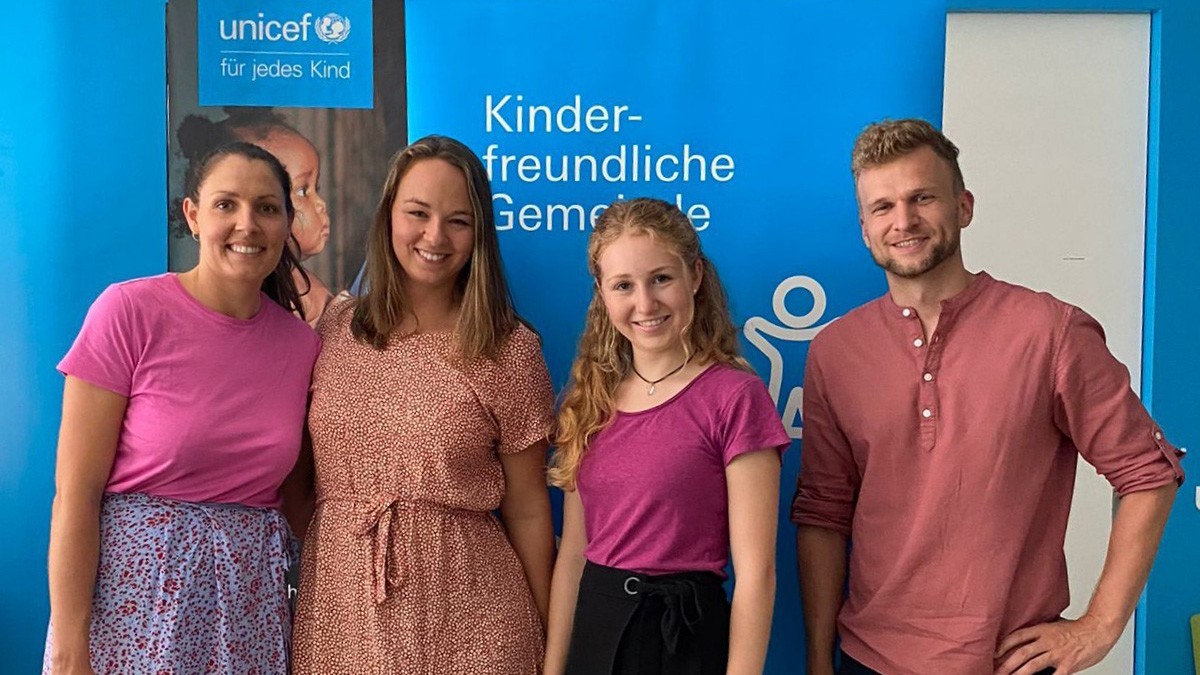Darleen Pfister is a politically active, 18-year-old secondary school student. In this blog, she reports on her taster internship at UNICEF Switzerland and Liechtenstein, and makes the case for children and young people to be more involved in community development from an early stage.
Experience report from Darleen Pfister
As a participant in the Swiss Federal Youth Session and co-project manager of the Bern Cantonal Youth Session, I experience the same thing over and over again: Our important concerns are praised, but they are not taken seriously. Sometimes they disappear in a drawer or even in the waste basket. That is frustrating, and is why I want to advocate for genuine participation. This led me to a taster internship with the Child-Friendly Cities Initiative at UNICEF Switzerland and Liechtenstein.
“It takes more than just a playground to make a municipality child-friendly. Child-friendliness is an attitude that needs to be fully implemented and embraced.”
I currently live in the city of Thun. I go to secondary school there, meet up with my friends and attend events. Because I spend so much time in Thun, the design of the city is also important to me, and I am keen to have a say in the process. That’s why I really value the participatory development processes of this “Child-Friendly City”. What should the train station site look like in the future, and what do I think about the climate strategy? The city’s residents are able to give feedback through sounding board sessions, charrette processes and participation days. Enabling children and young people to participate in local change processes as a matter of course is a basic principle of UNICEF’s Child-Friendly Cities Initiative. Their interests should take precedence. This enables them to live and grow up in an accessible, safe and customizable environment, irrespective of their origin, age or gender. Certified municipalities commit themselves to implementing their own action plan for a period of four years, thereby playing their part in implementing the Convention on the Rights of the Child.
I spent a week shadowing Mona Meienberg, Head of Child-Friendly Cities and City Development, and her colleagues, Alissa Brenn and Florian Hadatsch, in their day-to-day work. On the first day, we visited Vaduz in Liechtenstein to present the initiative and the certification process to the municipality. It is the fifth municipality in Liechtenstein to embark on the path to becoming a “Child-Friendly City”. Because only very few children and young people are aware of their rights, UNICEF Switzerland and Liechtenstein will be running a stand at the national scout camp and holding workshops. Could you list 10 children’s rights? The cubs and scouts will definitely be able to after their visit to the UNICEF tent. To ensure that everything runs smoothly, the employees were prepared for the two weeks.
On another day, we literally drove halfway across Switzerland. In the morning, we attended a working group meeting in Stein am Rhein, which is on the way to receiving its second certification. We discussed topics including conflicts of use in public spaces and how the community can deal with them. Stein am Rhein is not alone in facing this issue and could benefit from sharing knowledge with other affected communities, for example via a round table event. UNICEF Switzerland and Liechtenstein organize regular knowledge-sharing and networking opportunities for the “Child-Friendly Cities”. The next network meeting, on the topic of children’s rights in the digital space, will take place in Bern on September 13, 2022, and is being organized jointly with the Child Rights Network Switzerland.
In the evening, the Upper Valais Youth Work Center presented its “Jugend Partizipiert” (Youth Participation) project to community representatives, children and young people in Visp. The head of the Cantonal Youth Service and a member of the Brig-Glis Youth Council then shared their experiences. After a short workshop, Mona Meienberg gave a keynote presentation on participation at municipal level.
“Adults listen to experts when making important decisions. Some very important views are often forgotten, however, namely those of children and young people.”
I learned a lot from the many community visits, meetings and discussions. I realized just how challenging it can be for children and young people to work together with adult politicians. Children and young people need to demonstrate patience, while adults should use child-friendly language. My tip for adults: Perhaps ask someone from the young target group to read through your presentations beforehand. They’ll be able to tell you which words they don’t understand.
What I want from communities in the future is that they involve children and young people as early and as often as possible. We may disturb the peace and quiet in the neighborhood, but we are also able to discuss important issues in a highly objective way. When we are treated as equals and taken seriously, we are often keen to take part in participatory processes. If there are still not enough people having a say, it’s best to ask the experts in the community directly. Children and young people will definitely give you an answer.
